
- Brand ASUS
- Windows 10
- 8th Generation Intel
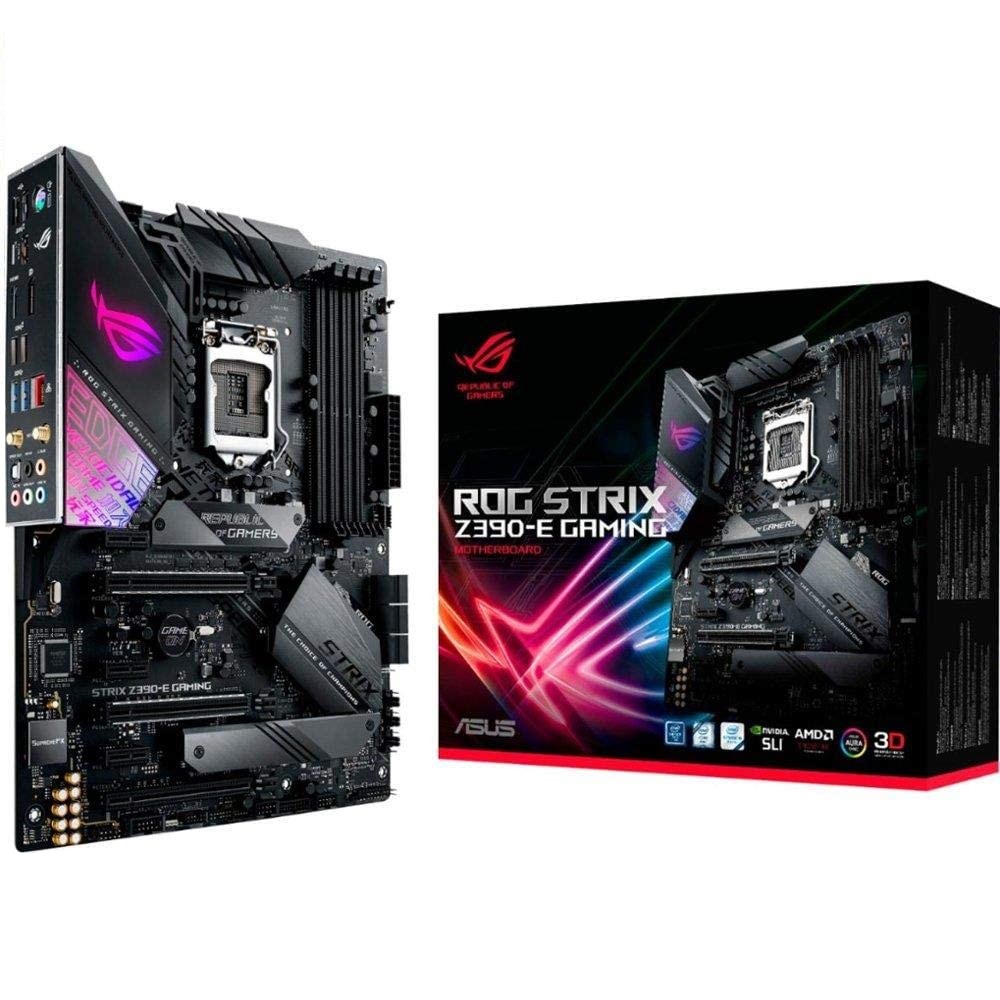
- Brand ASUS
- Windows 10
- 64 GB
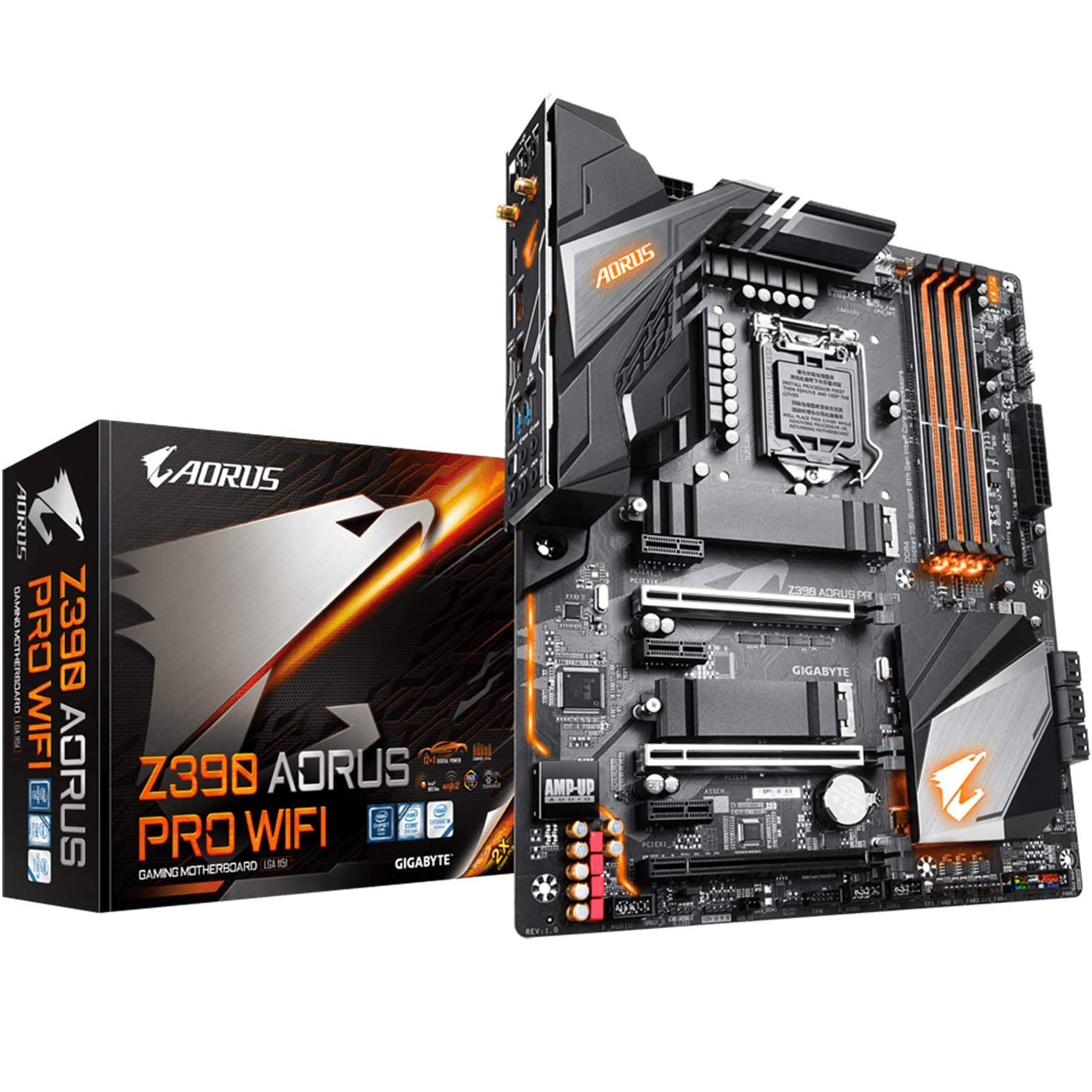
- Brand Gigabyte
- 10000 TB
- LGA 1151

- Brand Gigabyte
- LGA 1151
- 10000 TB
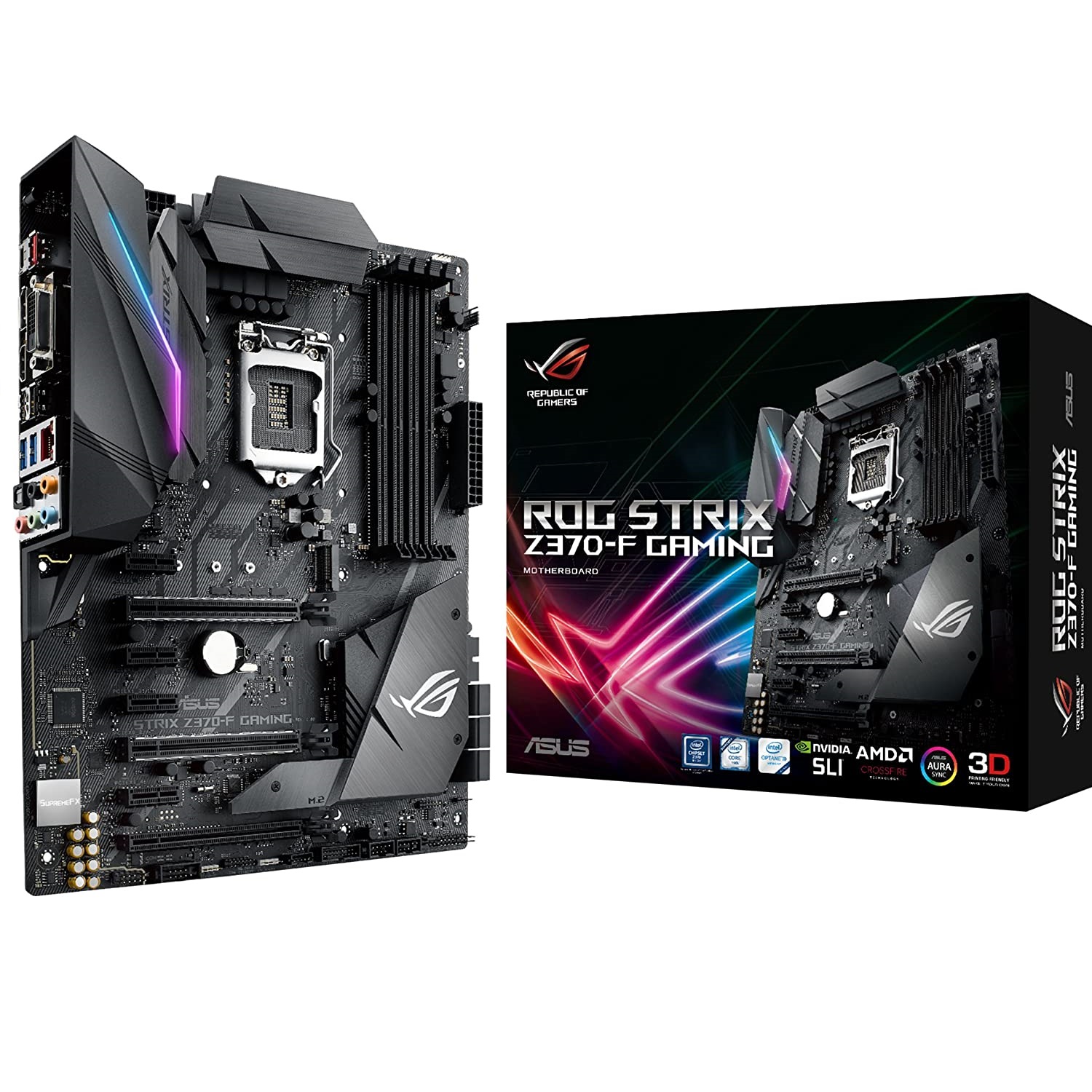
- Brand ASUS
- 2400 MHz
- Windows 10
Choose the Best Gaming Motherboard
Customer’s Choice: the Best Rated Gaming Motherboards
2 users answered this survey. Please help us improve this review!
One of the most important decisions you will make when building a gaming PC is choosing the motherboard.
The motherboard is responsible for everything from connecting your components to controlling their performance. Therefore, it’s important to choose one that fits both your budget and your needs.
The best gaming motherboards for i7 8700K should be able to handle the latest games and offer great features that will enhance your gaming experience. Also, they should be affordable without sacrificing quality.
It is finally time to upgrade your old gaming PC! However, with all of the different motherboard options on the market, it can be difficult to determine which one is right for you. In this article, PC gaming experts will discuss the best gaming motherboards for i7 8700K processors.
They will answer some common questions and provide reviews of several popular models. Therefore, whether you are looking for a high-end motherboard or something more affordable, we have you covered!
Table of Contents
ASUS Prime Z390-A Motherboard – the Editor’s choice!
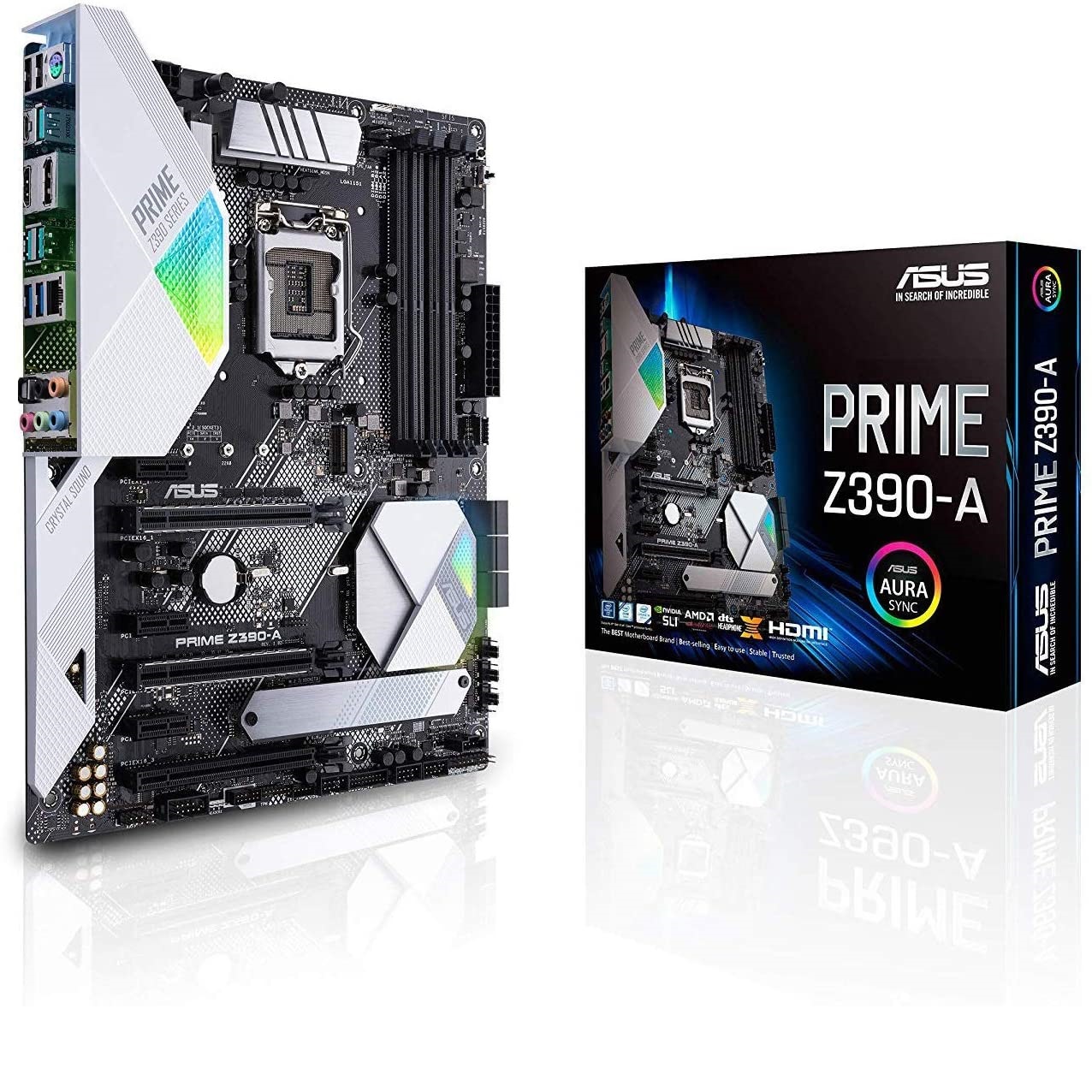 The ASUS Prime Z390-A Motherboard is a powerful and budget-friendly tool that provides a great experience for users who demand the best. It has complete RGB lighting comfort, designed specifically to work with 8th and 9th generation Intel Core processors, as well as advanced memory bandwidth. In addition, it features Safe Slot Core fortified PCIe slots and supports two M.2 cards for lightning fast speeds.
The ASUS Prime Z390-A Motherboard is a powerful and budget-friendly tool that provides a great experience for users who demand the best. It has complete RGB lighting comfort, designed specifically to work with 8th and 9th generation Intel Core processors, as well as advanced memory bandwidth. In addition, it features Safe Slot Core fortified PCIe slots and supports two M.2 cards for lightning fast speeds.
This mobo is designed specifically for 8th and 9th generation Intel Core processors, so you can rest assured that your system will run like a dream. Moreover, thanks to its improved DRAM overclocking, you’ll be able to get the most out of your memory.
ASUS ROG Strix Z390-E Gaming Motherboard – the best for CPU overclocking!
 Are you looking for a motherboard that doesn’t break the bank, but is still packed with features? Then the ASUS ROG Strix Z390-E Gaming Motherboard is perfect for you! This mobo is very efficient and comes with great software that makes overclocking a breeze.
Are you looking for a motherboard that doesn’t break the bank, but is still packed with features? Then the ASUS ROG Strix Z390-E Gaming Motherboard is perfect for you! This mobo is very efficient and comes with great software that makes overclocking a breeze.
In addition, it supports Wi-Fi and Bluetooth 5.0, so you can stay connected even when you’re on the go.
The USB connection is also top-notch, with USB 3.1 Gen 2 Type-A and Type-C connectors. And to top it all off, this motherboard uses quality components that offer better endurance.
This great motherboard features some top-notch components, making it perfect for overclocking. Moreover, its 5-way optimization makes setup a breeze. You’ll also love the Wi-Fi and Bluetooth 5.0 support, as well as the amazing USB connection.
GIGABYTE Z390 AORUS PRO Wi-Fi Fusion/Gaming Motherboard – the best for connectivity!
 The GIGABYTE Z390 AORUS PRO Wi-Fi Fusion/Gaming Motherboard is a great choice for anyone looking for good Wi-Fi connectivity and a variety of features.
The GIGABYTE Z390 AORUS PRO Wi-Fi Fusion/Gaming Motherboard is a great choice for anyone looking for good Wi-Fi connectivity and a variety of features.
It comes with 13 USB ports, multiple RGB LED lighting zones, four M.2 sockets, and a Thunderbolt header. It’s also reinforced to protect against damage from accidental bumps or drops, making it a reliable option for gamers and other users alike.
In addition, with its good price point and reinforced DIMM and PCIe slots, you know this board is built to last.
Moreover, the cooling feature helps keep your system running smoothly even under heavy use.
The GIGABYTE Z390 AORUS PRO Wi-Fi motherboard is a great option for gamers who need a board with superior Wi-Fi connectivity. It also has 13 USB ports, reinforced DIMM and PCIe slots, and nice cooling features.GIGABYTE Z390 UD Intel Z390 SATA 6Gb/s ATX Intel Motherboard – the best for the durability of materials!
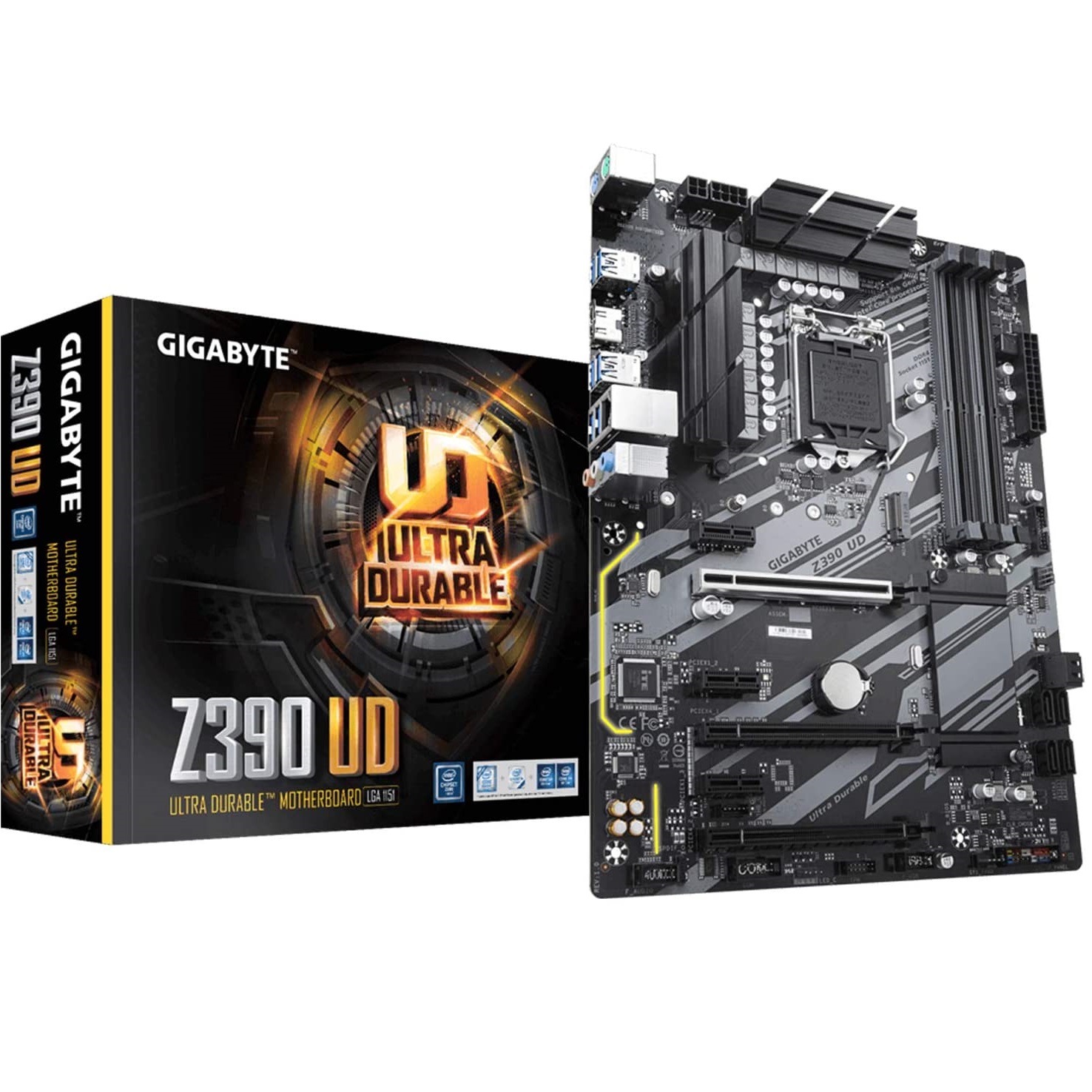 This motherboard is built with durability in mind, and it features a great price offer that makes it an excellent value. In addition, it supports overclocking so you can get the most out of your system. It also has a variety of ports, including HDMI output, making it perfect for any setup. And don’t forget about CrossFire support – this board allows you to add multiple GPUs to increase your gaming power.
This motherboard is built with durability in mind, and it features a great price offer that makes it an excellent value. In addition, it supports overclocking so you can get the most out of your system. It also has a variety of ports, including HDMI output, making it perfect for any setup. And don’t forget about CrossFire support – this board allows you to add multiple GPUs to increase your gaming power.
Are you looking for a motherboard that is both durable and affordable? Look no further than the GIGABYTE Z390 UD. This motherboard is designed to offer great performance at an excellent price. It also supports the latest Core i9-9900K CPU, making it perfect for overclocking enthusiasts. And if you need more graphics power, the three PCIe 3.0 slots provide ample room for expansion.
ASUS ROG Strix Z370-F Gaming ATX Motherboard – the best for design!
 This ASUS Motherboard is one of the most high-end motherboards on the market. It offers many features for a price that won’t break the bank, and it overclocks very nicely. Its stock performance is already impressive, but it also has an amazing VRM. The smart RGB integration is top-notch.
This ASUS Motherboard is one of the most high-end motherboards on the market. It offers many features for a price that won’t break the bank, and it overclocks very nicely. Its stock performance is already impressive, but it also has an amazing VRM. The smart RGB integration is top-notch.
This motherboard has a futuristic and stylish design, many features for the price, decent overclocking, nice stock performance, nice VRM, smart RGB integration, and Nvidia SLI support.
The Buyer’s Guide
Main Features:
Aesthetics
The motherboard should look good too. Thankfully, all the boards on this list come in a variety of colors and styles to choose from. Some people might prefer a more understated design, while others may want something that really pops. Be sure to pick the one that best suits your individual taste.
If you’re only going to look at your system’s guts when it’s powered down with the side panel off, there’s no need to spend extra on RGB lights or dazzling I/O covers and heatsinks. If your case has a window, though, get a board that you enjoy looking at – with or without lights.
Keep in mind that a black motherboard might make building or updating your system more difficult, especially if you’re a novice builder. If you want to make things as simple as possible, opt for a board with its fan and USB headers placed around the edges, and SATA and USB 3 header ports that point to the side rather than sticking up vertically. This will make achieving a clean build much easier.
RAM Capacity
All of the motherboards on this list support up to 64GB of RAM. If you plan on upgrading in the future, make sure your motherboard can accommodate that amount.
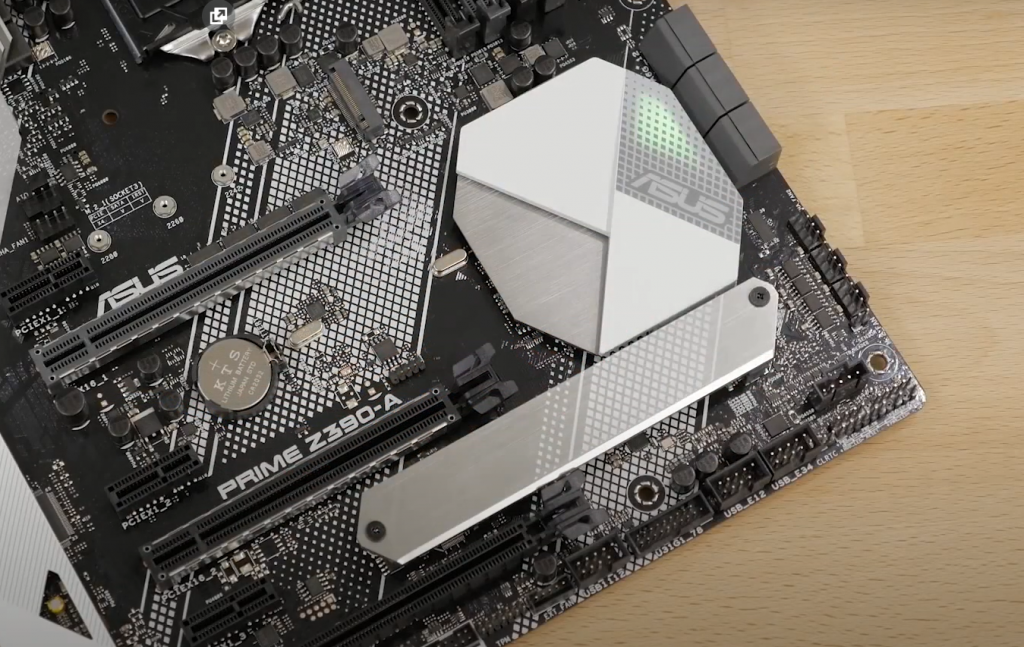
If you don’t plan on upgrading, then this isn’t an issue.
Consider what your needs are before choosing one over another. The higher the number means more memory slots available on each channel which can help reduce bottlenecks when transferring data between devices like graphics cards and hard drives for example!
Connectivity Ports
Here’s a list of common ports, as well as the judgments on each [1]:
- USB 3/USB 3.1 Gen1. These are excellent for any system user. You’ll never have too many of these since they’re compatible with most peripherals;
- USB 2.0 and USB 3.0 ports are more than fast enough for keyboards, mice, and other gadgets. It’s slower than USB 3/3.1, but it’s adequate for most purposes;
- USB 3.1/3.2 Gen2. USB Type-C is the new USB standard. It offers more bandwidth than USB 3.0 and 3.1 Gen 1/3. This high-speed connection delivers 10 Gbps of information, which is twice as much as with USB 3.1 Gen 1 / USB 3.0. 2×2 USB Type-C doubles that bandwidth once again, providing two 10 Gbps connections on the same cable (one for each lane). On mid-and high-end boards, you’ll generally see just one of these ports;
- USB Type-C. These ports are compatible with USB 3.1 Gen1 or USB 3.1 Gen2 and are intended for newer devices, such as smartphones. Some of them are also simply USB 2.0, and they’re frequently mistaken for Audio USB-C ports, which connect USB-C headsets;
- HDMI/DisplayPort Video out. If you want to utilize integrated graphics, you’ll need these. Discrete cards require their own connections;
- Audio ports. This will be important if you wish to connect older-generation analog speakers or headphones;
- PS/2 ports. It will also be compatible with really old keyboards and mice;
- Thunderbolt. This is a relatively uncommon feature built into motherboards, but some boards support it using specialized add-on cards. It extends connections to 40 Gbps through the most rapid possible links;
PCI Slots
You’ll also need to consider how many PCIe slots your motherboard has. You might want two graphics cards, or maybe one GPU and a sound card.
There are different types of M. Two types of PCIe x16 slot and one type of PCIe x32 slot exist in the market currently [2].
If you buy any M that only supports one video card, you won’t be able to use more than this single device at once because there’s no way for it to connect with another slot unless they’re both on separate boards (which isn’t usually possible). Theoretically speaking though – anything is possible!
SATA Ports
SATA ports are important for attaching storage drives like hard disks and optical drives. The more the merrier, especially if you plan on using multiple storage devices. All of the motherboards on this list come with at least four SATA III ports, which is plenty for most people [3].
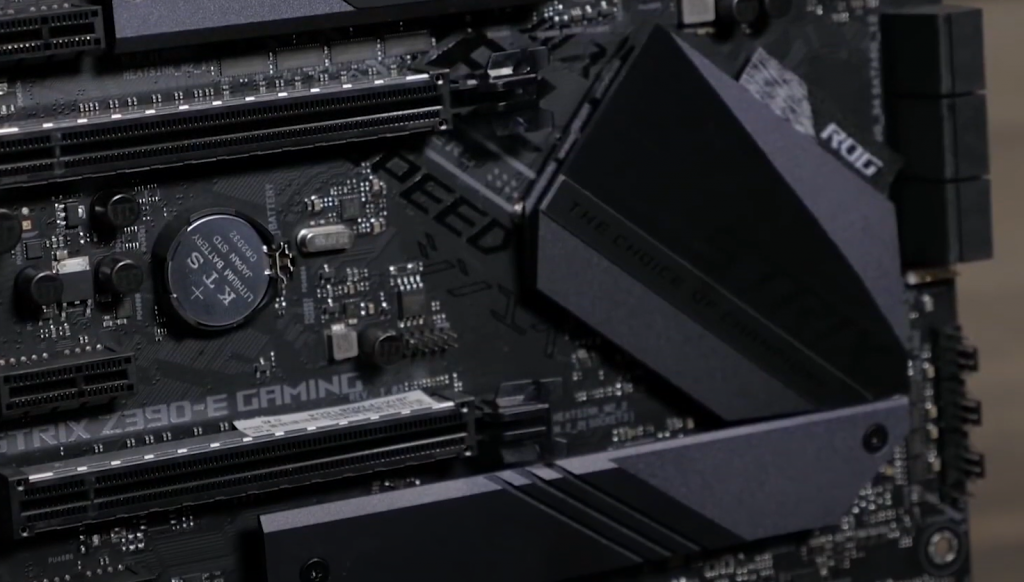
If you need more than four SATA III ports, however, be sure to check the specs before making your purchase. Some of the motherboards only have two or three extra ports available.
Form Factor
Also, you’ll need to consider the form factor of the motherboard.
The majority of modern motherboards are available in 3 sizes:
- The ATX form factor is the industry standard and has the most plug and slot capacity;
- Micro-ATX is 2.4 inches shorter than standard ATX, which means there will be fewer expansion slots available;
- Mini-ITX systems can be tiny, but they generally only accommodate one add-in card (such as a graphics card), and fewer storage and RAM connections;
The most popular ones are ATX and micro-ATX, but there are others as well. If you’re not sure which one to choose, consult your case’s manual or measure the space inside your computer to see what will fit.
Most of the motherboards on this list are either ATX or micro-ATX form factors, so you shouldn’t have any trouble finding one that suits your needs.
VRM and Power Supply
You’ll want to find a board with a beefy VRM that can handle overclocking and provide plenty of clean power to your CPU. Boards with an eight-phase VRM are ideal, but six phases will usually be sufficient [4].The quality of the power supply is also important. Look for a board with an integrated power phased array and premium components like International Rectifier PowIRstage ICs. These boards not only deliver more consistent power to your CPU, but they also last longer than cheaper alternatives.
In addition, some motherboards include additional features like voltage monitoring points or onboard buttons that let you control the voltage directly. These are nice features to have, but they aren’t essential for most users.
Motherboard manufacturers often market VRM specifications using different metrics and terminology that can be confusing at first glance. How should you choose a gaming motherboard?
The best way is to stick with trusted brands like ASUS, Gigabyte, ASRock, MSI because they tend to use similar standards across their product lines when it comes to naming conventions.
If you’re unsure how well your board will work for overclocking purposes then try looking up some benchmarks online before making a purchase decision. This may seem time-consuming, but it’s worth doing if you’re looking to squeeze every ounce of performance from your hardware.
Built-in Wi-Fi
One of the great things about gaming motherboards is that many of them come with built-in Wi-Fi. This can be really convenient if you don’t want to have to deal with extra cords and cables, or if you just want to be able to game from anywhere in your house without having to worry about finding an open Ethernet port.
Just make sure that the model you choose has a good range. Otherwise, you might find yourself struggling to get a signal in some parts of your home. Also, check the speed rating to see if it’s compatible with your router – you don’t want laggy gameplay ruining your fun.

If you already have a wireless router, then you might want to choose a model without built-in Wi-Fi so you can use your router’s signal instead. This is an especially good idea if you have trouble getting a strong connection in some areas of your house, or if the built-in wireless card on the motherboard isn’t rated for high enough speeds.
Some models even include Bluetooth connectivity, which means that they can connect wirelessly with other devices like keyboards and mice instead of requiring cords or cables. Again, just make sure it has a good range before choosing one over another option.
Upgrade Path
You need to make sure that your mobo can be upgraded. With this, you can add components such as more RAM or the latest graphics card. Also, look for ATX-sized boards since they are easier to upgrade and tend to be cheaper.
With that being said, it’s best if your motherboard can support at least one generation of CPU upgrades and allow you to install a new processor without changing anything else in your system. This way you don’t have any compatibility issues when upgrading CPUs later on down the road because most motherboards nowadays only support Intel LGA1151 sockets which means no matter what processor manufacturer makes them (Intel/AMD) they will all fit into each other perfectly.
On top of that, there should also be an available M.2 slot so you can connect solid-state drives (SSD) directly to the motherboard instead of using a SATA cable or USB port that can limit transfer speeds if too many devices are connected.
The last thing you want is for your computer not to be able to keep up with new games because it doesn’t have enough RAM so make sure that there will be plenty of room for future upgrades before purchasing one now!
This is important especially when buying an Intel Core I-series processor since those typically only come with 16 GBs max memory capacity that might not be enough even though they say “it’s good enough today but we will see tomorrow…”
CPU Compatibility
Because your CPU socket is only compatible with chips from the chip-line it was designed for, you’ll be restricted to options based on the CPU you’ve selected.
You’ll need a board with an LGA 1200 socket if you’re buying an Intel 10th or 11th Generation Core processor, for example. Processors from the 9th generation will require boards with an LGA 1151 socket.
AMD’s AM4 socket accommodates motherboards from all previous-generation Ryzen chips, up to and including the 16-core Ryzen 9 parts. However, because AMD uses the same AM4 socket for all of its mainstream current-gen CPUs, from Athlons through to 16-core Ryzen 9s, this may be a bit confusing at first. Intel has been known to move sockets (or at least socket compatibility) from one generation to the next in recent years, but that isn’t the case this time around with Socket 1200 sticking around for two generations.
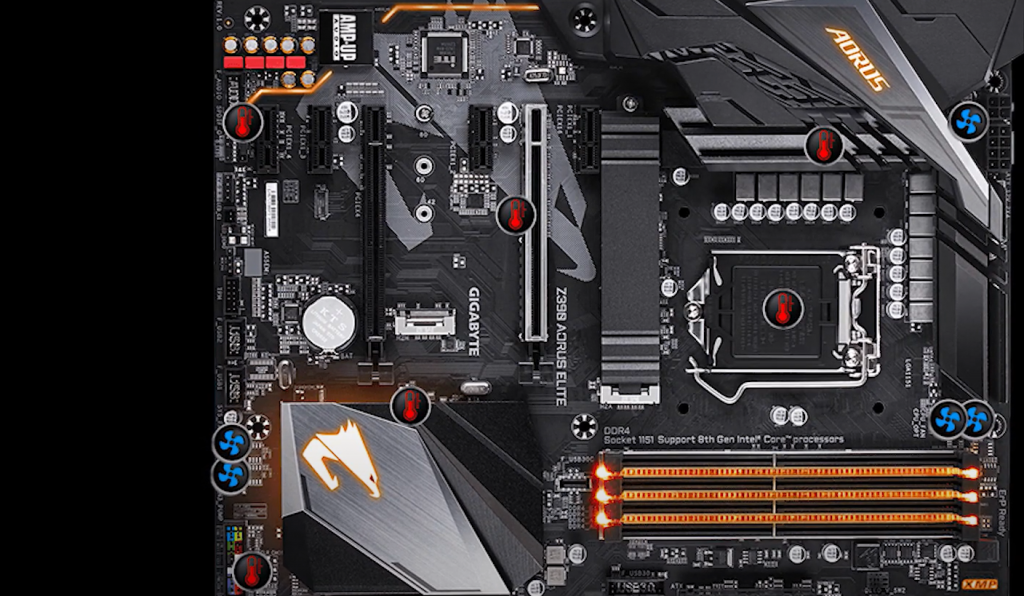
For the high-end, Intel (LGA 2066) and AMD (TR4) have distinct sockets to allow for their Core X and Threadripper processors’ larger dimensions and power draws.
Tips for users:
- Get the appropriate socket for your CPU. You can get great CPUs from both Intel and AMD, but make sure your motherboard has the proper socket to support it. The most recent AMD mainstream processors use AM4 sockets, while current Intel 10th and 11th Generation Core CPUs operate in LGA 1200 sockets;
- The size of a motherboard is indicated by the number of slots and features it has. The three biggest sizes of motherboards are ATX, Micro-ATX, and Mini-ITX (Yes, as you might expect, Mini is smaller than Micro). A smaller chassis can be used with micro or mini boards; however, you’ll have to do without more PCIe slots, RAM slots, and other connections;
- You can spend as little as $150. A decent motherboard may be found for less than $150 on occasion. However, if you want to overclock an Intel chip with PCIe 4.0 or require a lot of ports, you’ll have to spend more than $200. AMD Threadripper chips need high-end motherboards that cost around $200;
- If you need them, pay for built-in Wi-Fi and high-end ports. If you’re using a wired connection, don’t spend extra on wireless. USB 3.1 Gen 2 and/or Thunderbolt 3 support, as well as PCIe 4.0, can future-proof your PC;
How to Install Motherboard:
- First, you will need to determine which motherboard is most appropriate for the PC. The type of CPU and amount of RAM that are needed will be dictated by the tasks it performs. A computer used primarily for work or gaming would require a more powerful setup than one intended solely as an Internet browser machine;
- Next, remove all screws from the case with a Phillips screwdriver (make sure not to lose them). Then carefully lift off the top cover so there’s room underneath where we’ll install our new components! Use caution when handling delicate parts like hard drives because they can easily break if mishandled while removing old ones too quickly during this process;
- Now take out any existing PCI cards such as video cards but leave alone anything else connected to those slots unless you’re removing it, such as the Wi-Fi card. If you are replacing or upgrading these other parts, now is the time to do so;
- Remove old motherboard by taking out screws on the back and gently pulling it away from chassis. Be careful not to lose any screws in the process! Now line up a new board with screw holes and replace screws before doing the same thing in reverse order for putting everything back together again – connect cables last;
- It’s always a good idea to consult your motherboard manual when installing or upgrading components just to be sure you’re doing things correctly (and avoid damaging anything). There are also plenty of helpful online guides that can take you through each step of this process if needed. Motherboard installation need not be daunting once you know what you’re doing;
FAQ
What RAM should I get for i7 8700K?
The i7-8700K is a six-core CPU with hyperthreading enabled and operates at 3.7 GHz, with a 95 W TDP and a maximum Turbo Boost frequency of 4.7 GHz. This chip supports up to 128 GiB of dual-channel DDR4-2666 memory and an Intel UHD Graphics 630 IGP running at 350 MHz with a burst frequency of 1.2 GHz [5].
What generation is the i7 8700?
The 8th generation Intel Core i7-8700 processor is based on Coffee Lake architecture and includes 12MB of cache memory [6].
Intel Core I-series processors are the most powerful in their class, delivering excellent performance and power efficiency. They deliver an enhanced gaming experience, fast application loading times, smooth multitasking capabilities, and high-quality video playback.
The Intel Core i-Processor Family is designed for a variety of usages from gaming to productivity tasks. The CPU’s architecture has been optimized for multi-threaded applications that utilize all cores simultaneously.
What chipset is the i7 8700k?
The i7-8700K is a Coffee Lake-S core, which is compatible with Socket 1151. There are 91 Coffee Lake-S chips in the same socket as well [7].
How do I overclock my CPU i7 8700K?
There is no one-size-fits-all answer to this question, as overclocking your CPU will depend on the specific motherboard you are using and the processor itself. However, most motherboards come with built-in overclocking features that allow you to easily change the clock speed and other settings of your CPU. Consult your motherboard’s user manual for more information on how to overclock your i-GPU.
If you’re looking for a more hands-on approach to overclocking, try using software like MSI Afterburner or EVGA Precision XOC. These programs allow you to modify all kinds of settings related to your graphics card, including clock speeds, voltages, and fan profiles.
Overclocking can be a great way to squeeze extra performance out of your system, but keep in mind that it’s not always worth the effort. If you don’t think you’ll ever need the additional power, then don’t bother trying!
Can my motherboard support i7 8700K?
Again, this depends on the specific motherboard you are using. However, most modern motherboards will be compatible with the I-series processors from Intel. Be sure to check your motherboard’s specifications before making a purchase.
If you’re not sure whether or not your motherboard is compatible with an I-series CPU, try looking for a product page on the manufacturer’s website, or searching for user reviews online. If you still can’t find an answer, feel free to post a question in our community forums and we’ll do our best to help out!
In addition to checking for compatibility, it’s also important to consider what kind of features your motherboard offers. Some models come with built-in overclocking features, while others have more robust networking and audio capabilities. It’s important to find a motherboard that suits your needs, otherwise, you might end up spending extra money on features you don’t need.
What socket is 8700K?
The socket for the i700K is LGA 11511 [8]. This is a newer socket than some of the others that have been used in recent years, so it can be tricky to find a motherboard that will work with it. Make sure to do your research before you buy!
There are two main things to look out for when choosing a motherboard: compatibility and features. The first thing you need to make sure of is that the socket on the motherboard matches that of your processor. You also need to check whether your graphics card will be compatible with the board, as well as any other peripherals you may want to use.
Some motherboards come equipped with more features than others. These extra features could include better audio quality, more USB ports, or even built-in Wi-Fi. Decide which features are most important to you and shop accordingly.
The best gaming motherboards for i700K don’t come cheap, but they’re definitely worth the investment. When it comes to making your PC as powerful as possible, nothing is more important than the motherboard. So make sure to do your research and choose wisely!
What is the difference between i7-8700 and i7 8700K?
The Intel Core i7-8700 is a six-core desktop CPU with the Coffee Lake architecture and was introduced in September 2017. The CPU operates at between 3.2 and 4.6 GHz, and it can execute up to twelve threads at once thanks to Hyper-Threading.
The CPU is produced on a 14nm (14nm++) process, according to Intel. The i7-8700 offers lower TDP and no unlocked multiplier as opposed to the slightly higher clocked Core i7-8700K (no easy overclocking).
Due to the two extra cores, performance has increased by almost 50% over prior quad-core Kaby Lake CPUs. Single-core performance has remained unchanged. The i7-8700 is a high-end processor with plenty of power for demanding applications and games.
The iGPU (integrated graphics processor unit) in the AMD Ryzen 7 2700H is known to perform better owing to a 50 MHz clock increase. The design of the Intel HD Graphics 630 remains unchanged. We anticipate a performance boost, but as a low-end solution, it will most likely only display current video games at reduced details – if at all.
The TDP specifies 65 watts as Intel’s maximum. As a result, well-dimensioned cooling systems should be able to easily cope with the generated heat [9].
How many threads does the i7 8700K have?
It has six cores and 12 threads, and it runs at a speed of 4.8GHz Turbo [10].
What does K mean on a CPU?
K processors are unlocked Intel CPUs that allow you to adjust the multiplier and overclock them. You can speed up a K processor beyond its stock speeds by adjusting this multiplier upwards, or lowering it if your system is overheating. The latest K models were launched in 2017 with the release of Coffee Lake (Intel’s eighth-generation).
These include the iX-8700K, iX-8600K, iX-8350K, and Pentium G4560 among other models. At launch time these new K series CPU chips came out at top speeds of 40 GHz for the flagship model iX-8700K but do not be fooled into thinking that any old motherboard will allow you to overclock your CPU chip fully and achieve these speeds.
It will dictate largely what you can and cannot do with your overclock. If you are looking to buy a new motherboard for an iX-8700K or any other K model processor, then we have got you covered.
Is 1.4 volts safe for 8700K?
Yes. The voltage for the iX-8700K is typically around or below the recommended maximum of “about” (not to be confused with a strict) of one and a half volts [11].
You don’t want to go over this maximum as it can damage your chip, so it’s important that you find out what voltage your specific CPU needs before overclocking and adjust accordingly.
Most motherboards include some form of automatic overclocking feature these days that will help you tweak all the settings required in order to get your system running stable at faster speeds without too much manual input on your part.
If you are using air cooler then there is usually no problem raising the voltage by up to 0.05 volts safely but if you are using water cooling then you can go higher.
The ideal voltage depends on your system and the individual chip itself, but, generally speaking, anything between 0.95 volts to a maximum of one and a half is safe for most chips with good air or liquid cooling in place.
If you don’t have any form of automatic overclocking mode or tool installed on your motherboard to help you adjust these settings (and even if it does), it’s always worth checking how much stress tests like Prime 95 and Furmark.
Put on their respective components before turning them loose full force in real-time gaming situations where things could potentially heat up even more than during these synthetic benchmarks!
Does i7 8700K work with Z390?
The Z390 boards are fully compatible with eighth-generation CPUs, so there should be no problems using an 8700k [12].
Does i7 8700K work with Z490?
No, the Core i7 8700K is only compatible with LGA1151-2 motherboards. Socket LGA1200 is used by the Z490 chipset. They are not physically compatible. Intel 10th generation processors will be available on Z490 motherboards.
Is there a 6-Core i7?
The majority of the most recent Intel Core i5 and Core i7 processors feature four or more cores, which is what you should consider the ideal balance for typical users. Many late-model desktop Core i5 and Core I7 chips have six cores, while a few ultra-high-end gaming PCs include eight-core Core i7s [13].
Does the i7-8700K have pins?
The Intel i7 processor series lacks pins on the processor; rather, they are located on the motherboard.
How long will an i7 8700K last?
The lifespan of an i74-8700K processor is typically quite long if it is well taken care of. As with all electronics, however, it is always possible for something to go wrong that results in a shorter lifespan.
An i74-8700K processor can last over ten years under the right conditions, but an i74-8700 will likely not survive more than five years. If you want to extend the life of your computer, it’s important that you buy a high-quality motherboard and keep it clean.
The lifespan of an Intel Core i74-8700K is expected to be at least three to four times longer than most other processors on the market today. It has been designed with longevity in mind from day one!
Is i7 8700K powerful?
The Intel Core i7-8700K was one of the most powerful processors on the market when it was released in 2017.
This CPU has 6 cores and 12 threads, which is enough processing power for any task you throw at it!
Does the 8700K have hyperthreading?
In the case of i78700K hyperthreading, it is enabled for all cores by default. The Intel Core i78700K has six cores with twelve threads, so there are twelve logical processors available to Windows.
If you want to change this setting in your BIOS or UEFI firmware settings menu (which is usually under “Advanced CPU Configuration”), simply set the number of CPUs that should be visible from sixes down until two at most.
Does the Intel i7 8700K have TPM?
The Intel i78700K does not have a TPM built into it. However, several motherboards support this feature.
If you’re looking for an inexpensive way to add security features like encryption and key management without paying extra money on hardware like the Trusted Platform Module (TPM), then check out these boards with TPMs included!
Useful Video: 5 Best Motherboards for i7 8700K in 2021
References:
- https://www.tomshardware.com/reviews/motherboard-buying-guide,5682.html
- https://www.techopedia.com/definition/8816/pci-slot
- https://laptopar.com/sata-ports
- http://blog.logicalincrements.com/2019/02/what-are-how-many-motherboard-vrms-power-phases
- https://en.wikichip.org/wiki/intel/core_i7/i7-8700k
- https://www.bhphotovideo.com/c/product/1356633-REG/intel_bx80684i78700_core_i7_8700_3_2_ghz.html
- https://www.cpu-upgrade.com/CPUs/Intel/Core_i7/i7-8700K.html
- https://ark.intel.com/content/www/us/en/ark/products/126684/intel-core-i78700k-processor-12m-cache-up-to-4-70-ghz.html
- https://www.notebookcheck.net/i7-8700-vs-i7-8700K_9932_9296.247596.0.html
- https://www.pcgamer.com/should-i-buy-intel-core-i7-8700k/
- https://www.overclock.net/threads/8700k-24-7-voltage-use.1643707
- https://rog.asus.com/forum/showthread.php?105697-z390-and-8700k
- https://www.pcmag.com/news/which-cpu-should-you-buy-intel-core-i5-vs-i7




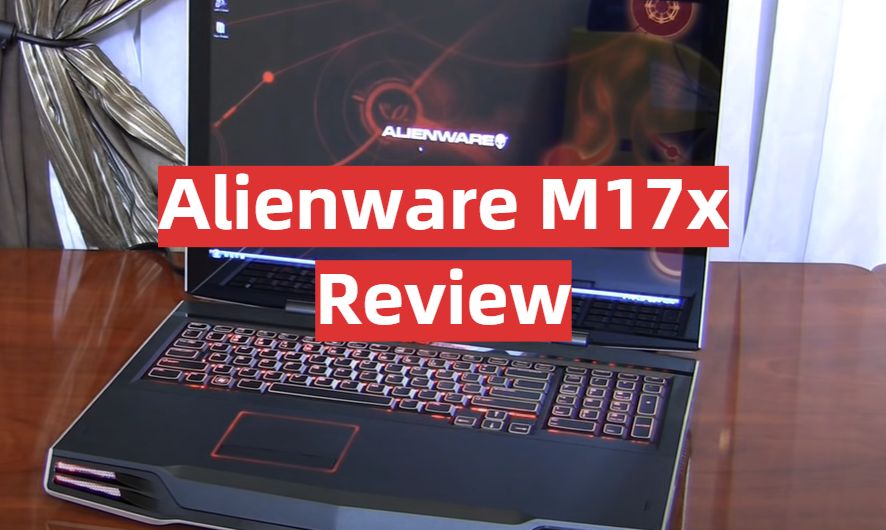

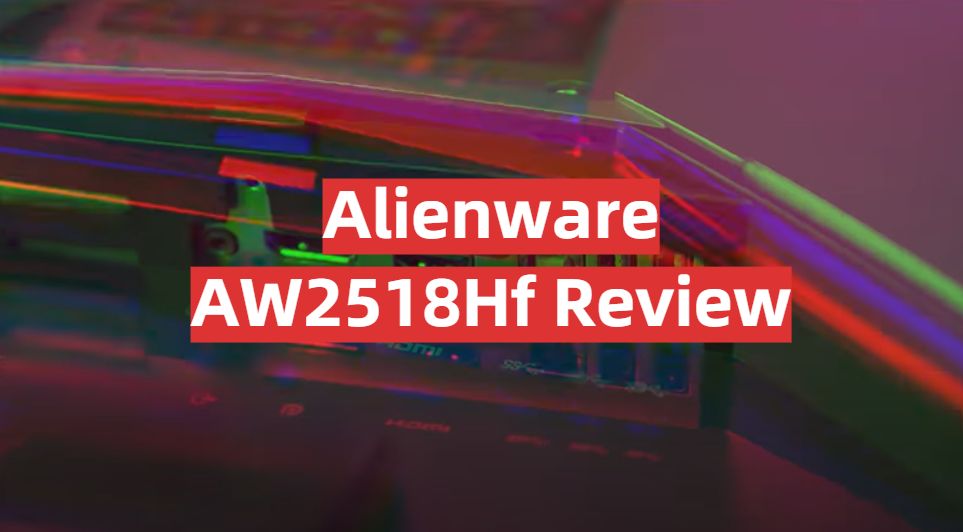
Leave a Reply